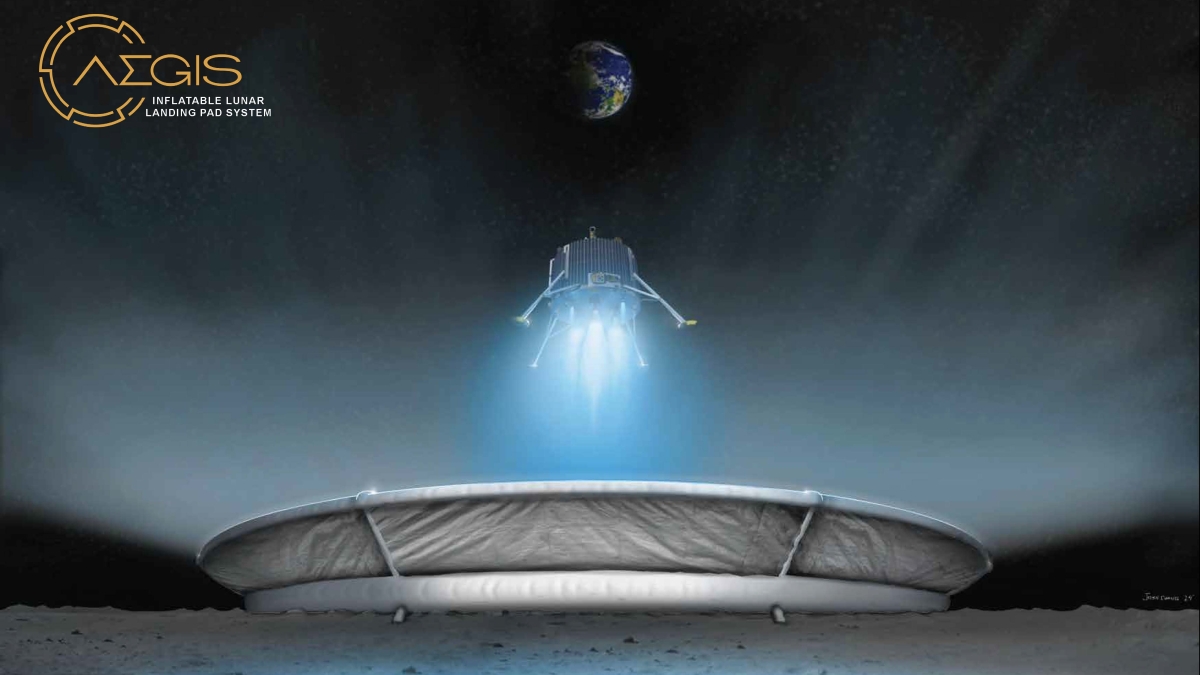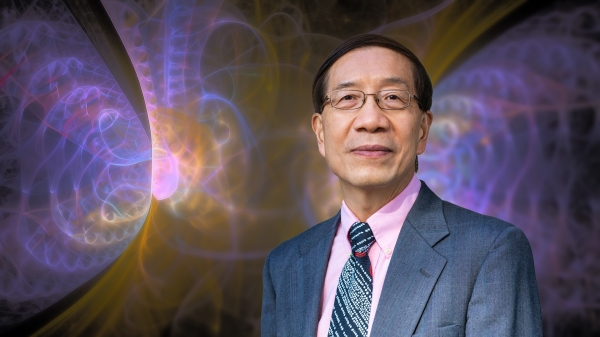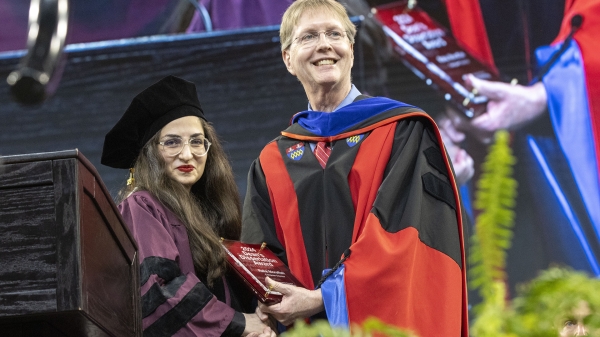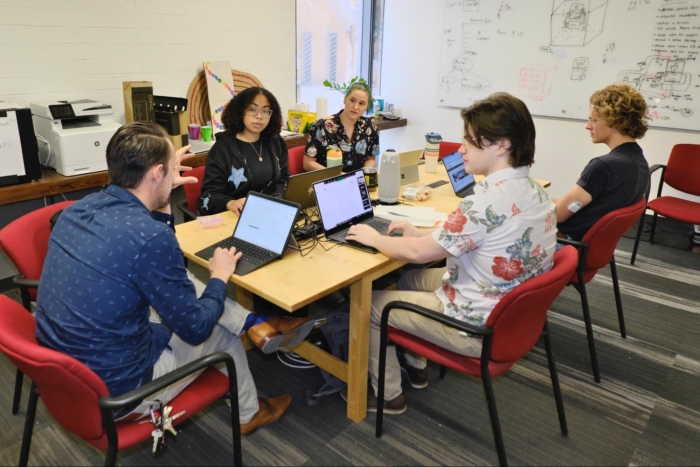ASU student team’s design selected as finalist for 2024 NASA-sponsored BIG Idea Challenge

An artistic rendering of the student-designed AEGIS inflatable lunar landing system, which is capable of autonomously deploying to reduce dust and debris generated by landers. Image courtesy Luminosity Lab/ASU
Arizona State University’s Luminosity Lab student team was recently selected as a finalist in NASA’s Breakthrough, Innovative, and Game-Changing (BIG) Idea Challenge. The group is one of six teams selected by NASA to present at the 2024 BIG Idea Challenge Forum, Nov. 5–7, at NASA Langley Research Center in Hampton, Virginia.
The theme for the 2024 NASA-sponsored engineering competition, “Inflatable Systems for Lunar Operations,” challenges student teams to research, design and demonstrate novel inflatable systems configured for future lunar operations that could help future Artemis missions and beyond.
The Luminosity Lab’s student group designed an inflatable and reusable lunar landing pad system, Aegis, which is capable of autonomously deploying to reduce dust and debris generated by landers; the system will also provide precision landing assistance to enable a safe landing. Being chosen as finalists means students will spend the next several months designing, building and testing their ideas, supported by as much as $150,000 from NASA.
“We have a phenomenal team of students working on this project, and I’m really proud of what they have accomplished by winning this proposal,” said Tyler Smith, senior director at ASU’s Luminosity Lab. “The inflatable landing pad system they designed is both innovative and solves a real issue for landers on the lunar surface.”
Presenting at the finals this fall provides students the opportunity to work with experts from NASA and the commercial space industry, and to receive guidance from faculty advisors from ASU’s School of Earth and Space Exploration (SESE) and Space Technology and Science ("NewSpace") Initiative, such as Professor Jim Bell and Jim Rice, assistant research scientist, both of whom have been actively involved with several NASA solar system exploration missions.
"The team at Luminosity Lab has done a fantastic job pitching an elegant solution to NASA's call for innovative inflatable technologies on the moon,” said Bell. “A number of us in SESE and ASU/NewSpace are eager to work with these talented students to help them mature their design and test/prototype it first here in Arizona and then later this year at NASA."
The BIG Idea Challenge is an initiative supporting NASA’s Space Technology Mission Directorate’s Game Changing Development program’s efforts to rapidly mature innovative and high-impact capabilities and technologies for infusion in a broad array of future NASA missions. This engineering design competition seeks innovative ideas from the higher education academic community for new topics each year relevant to current NASA Space Technology priorities.
NASA’s Space Technology Mission Directorate sponsors the BIG Idea Challenge through a unique collaboration between its Game Changing Development program and the agency’s Office of STEM Engagement. It is managed by a partnership between the National Institute of Aerospace and the Johns Hopkins Applied Physics Laboratory.
More Science and technology
Extreme HGTV: Students to learn how to design habitats for living, working in space
Architecture students at Arizona State University already learn how to design spaces for many kinds of environments, and now they can tackle one of the biggest habitat challenges — space architecture…

Human brains teach AI new skills
Artificial intelligence, or AI, is rapidly advancing, but it hasn’t yet outpaced human intelligence. Our brains’ capacity for adaptability and imagination has allowed us to overcome challenges and…

Doctoral students cruise into roles as computer engineering innovators
Raha Moraffah is grateful for her experiences as a doctoral student in the School of Computing and Augmented Intelligence, part of the Ira A. Fulton Schools of Engineering at Arizona State University…
